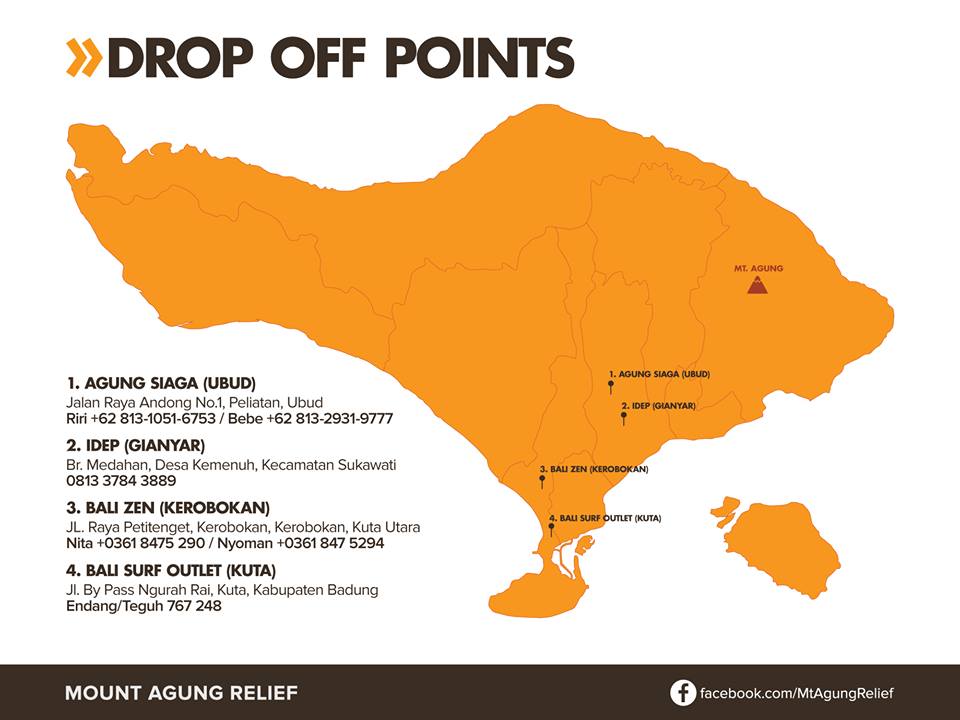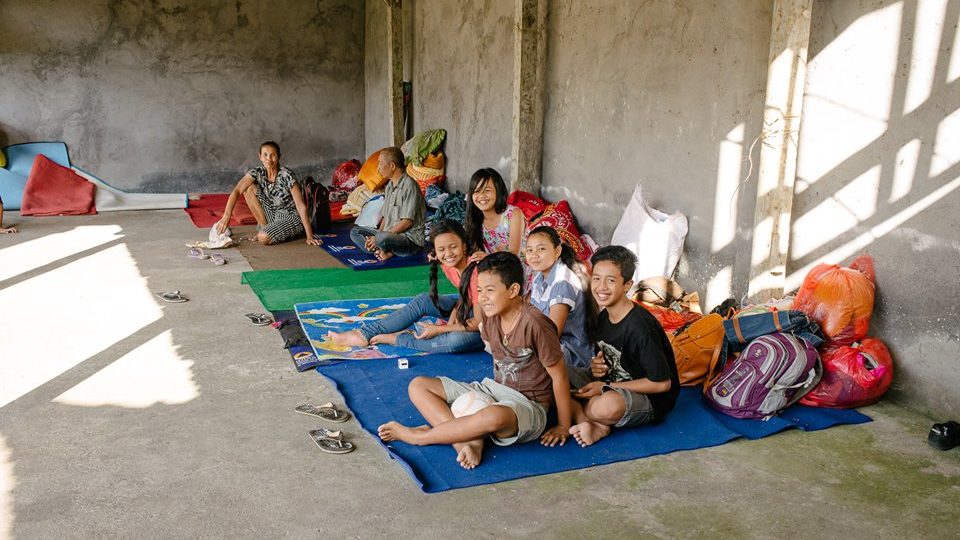Bali’s Mount Agung volcano has been erupting since last week, but thousands of evacuees have been in serious need of assistance for weeks.
While the volcano’s ash spewing has been a headache for tourists stranded on the resort island, the eruption has forced tens of thousands of local residents to evacuate, putting their health and livelihoods in the balance.
Evacuation centers have been filling up on the island as the exclusion zone expanded to a radius of eight to 10 kilometers from the Agung crater when the volcano’s alert status was upgraded to the highest level on Monday.
Some 40,000 people are said to have abandoned their homes in the red zone, but disaster agency officials estimate as many as 100,000 will likely be forced to flee.
By far one of the most organized, concentrated non-governmental relief operations is a joint effort by local NGOs and community figures, coordinated by Kopernik, IDEP Foundation, Bumi Sehat, Rio Helmi, Rucina Ballinger, and parents from the Green School.
Simply going by the name Mount Agung Relief, the community-led effort is raising funds and providing supplies and immediate support needed on the ground. Mount Agung Relief lists the National Disaster Mitigation Agency (BNPB), which has been responsible for setting up and managing the evacuation centers, as its local partner.
And because of the situations ever-changing nature, the focus is currently using funds raised to distribute proper N95 respirator masks, needed as falling ash can be acidic and cause irritation to the eyes, skin, and lungs.
Though in the next couple of days, the situation could easily change and the focus could change with it.
“Due to the evolving nature of this emergency, we are currently responding to meet the immediate needs of the evacuees. While the N95 respirator masks are the priority today, this may change in the next couple of days,” Vanesha Manuturi, Kopernik Digital Content Officer told Coconuts Bali in an email.
Over the past couple of months, since we’ve seen the volcano’s status go up to the highest alert level on Sept. 22, then back down on Oct. 29 (and now back up again), Mount Agung Relief has been active.
The effort has built 26 toilets across 20 evacuation points and delivered more than 40 truckloads to the evacuation points, carrying critical supplies, including blankets, mats, diapers, medical supplies, 485 water filters, solar lights, clothing, stoves, food and formula and much more.
“We’ve also distributed 20,000 N95 masks, including special children’s masks,” Manutur said.
Moreover, the relief effort has supporting the well-being of 60 cows—a big issue as evacuating farmers had been forced to leave their livestock behind, unattended in the danger zone, unable to bring them to evacuation centers.
Efforts have also focused on disaster preparedness and education, says Manuturi.
“We also facilitated the trips of 2 volcano/community disaster response experts and trained more than 700 community leaders in evacuation and emergency preparedness.”
Donations can be made directly to Mount Agung Relief through Kopernik’s website, which showed that $17,938.50 had been raised in their “phase four” emergency response, as of Wednesday evening.
Making a donation is the most impactful way to help the relief effort, which says on its Facebook page that it is unable to accept or coordinate volunteers at this time—though they say they will post an update if any changes about the type of assistance needed come about.
There are four different drop-off points, however, where Mount Agung Relief is accepting donated goods and food:






Reader Interactions